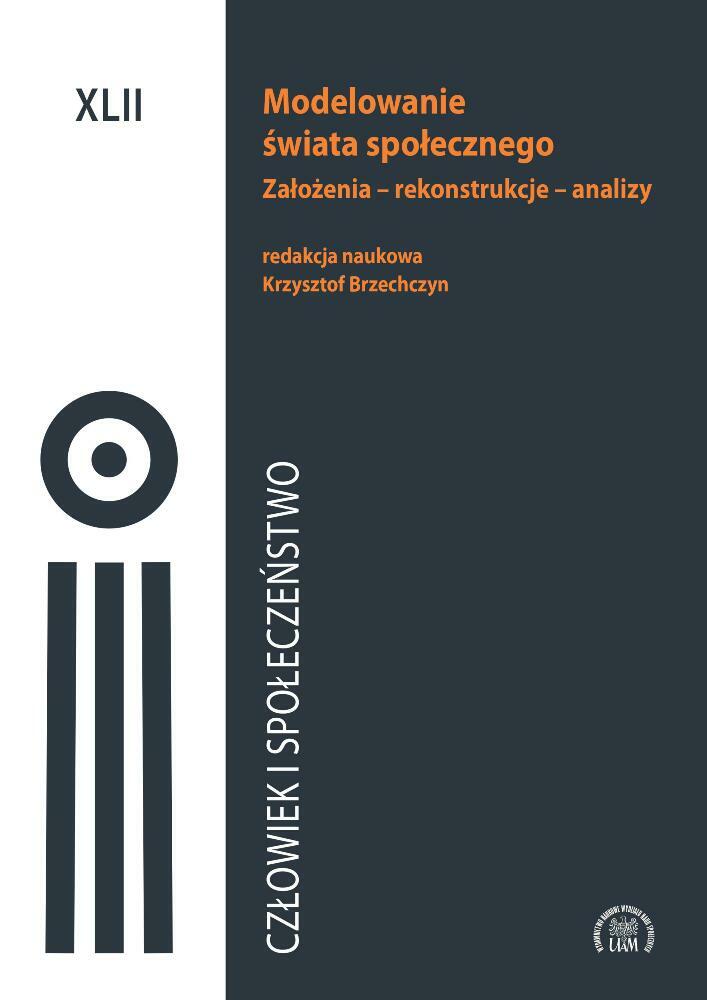Abstrakt
The paper analyzes three dimensions of the usable city: experiential, functional and rational. These dimensions are connected with three types of mental experiences, respectively, sensational, perceptional and conceptual, and with three neural networks: salience, central executive and default mode. It is argued that sensations refer to the physical space of the city, perceptions to the functional niche of the city, and concepts to the values implemented in the brain and recognized in the urban objects during their usage. The notion of the usable city is tightly connected with the notion of the happy city: three brain networks computing the information about dimensions of the usable city generate three parameters of happiness: pleasure, satisfaction, and one’s potential realization.
Bibliografia
Berto R., Massaccesi S., Pasini M., Do eye movements measured across high and low fascination photographs differ? Addressing Kaplan’s fascination hypothesis, „Journal of Environmental Psychology” 28 (2)/2008.
Bloom P., How Pleasure Works, Vintage Books, London 2011.
Błaszak M., Ekotypy poznawcze człowieka, Bogucki Wydawnictwo Naukowe, Poznań 2013.
Bok S., Exploring Happiness. From Aristotle to Brain Science, Yale University Press, New Haven 2011.
Bressler S. L., Menon V., Large-scale brain networks in cognition: Emerging methods and principles, „Trends in Cognitive Sciences” 14/2010.
Craig A. D., How do you feel? An Interoceptive moment with your neurobiological self, Princeton University Press, New Jersey 2015.
Crawford M., The World Beyond Your Head. How to Flourish in an Age of Distraction. Viking, London 2015.
Dennett D., Consciousness Explained, Little, Brown and Company, New York 1991.
Edelman S., The Happiness of Pursuit. What Neuroscience Can Teach Us about the Good Life, Basic Books, New York 2012.
Ellard C., Places of the Heart, Bellevue Literary Press, New York 2015.
Frey B., Happiness. A Revolution In Economics, The MIT Press, Cambridge, Mass. 2008.
Gibson J., The ecological approach to visual perception, Erlbaum, Hillsdale, NJ 1979.
Gilbert D., Stumbling on happiness, Random House, New York 2006.
Goldberg E., The New Executive Brain. Frontal Lobes in a Complex World, Oxford University Press, New York 2009.
Haidt J., Prawy umysł. Dlaczego dobrych ludzi dzieli religia i polityka?, tłum. A. Nowak, Smak Słowa, Sopot 2014.
Hallowell E., Overloaded Circuits: Why Smart People Underperform, „Harvard Business Review” styczeń 2005.
Koutstaal W., Binks J., Innovating Minds. Rethinking Creativity to Inspire Change, Oxford University Press, New York 2015.
Kuo F., Sullivan W., Environment and Crime in the Inner City. Does Vegetation Reduce Crime?, „Environment and Behavior” t. 33, 3/2001.
Levit N., Linder D., The Happy Lawyer, Oxford University Press, New York 2010.
Manzano O. De, Theorell T., Harmat L., Ullen F., The psychophysiology of flow during piano playing, „Emotion” 10/2010.
Marr D., Vision, W. H. Freeman, New York 1982.
Menon V., Salience Network, w: A. W. Toga (red.), Brain Mapping: An Encyclopedic Reference, vol. 2, Academic Press, New York 2015.
Mithen S., The Prehistory of the Mind, Thames & Hudson, London 1996.
Neubert F.-X., Mars R., Thomas A, Sallet J., Rushworth M., Comparison of human ventral frontal cortex areas for cognitive control and language with areas in monkey frontal cortex, „Neuron” 81/2014.
Pfeiffer J., The Creative Explosion: An Inquiry into the Origins of Art and Religion, Harper & Row, New York 1982.
Raichle M., Snyder A., A default mode of brain function. A brief history of an evolving idea, „Neuroimage” 37/2007.
Shenhav A., Botvinick M., Cohen J., The Expected Value of Control: An Integrative Theory of Anterior Cingulate Cortex Function, „Neuron” 79/2013.
Sternberg E., Healing spaces. The Science of Place and Well-Being, Harvard University Press, Cambridge, Mass. 2009.
Sternberg E., The Balance Within. The Science Connecting Health and Emotions, W. H. Freeman and Co., New York 2001.
Stone A., Schwartz J., Broderick J., Deaton A., A snapshot of the age distribution of psychological well-being in the United States, „Proceedings of the National Academy of Sciences” t. 107, 22/2010.
Takano T., Nakamura K., Watanabe M., Urban residential environments and senior citizens’ longevity in megacity areas: the importance of walkable green spaces, „Journal of Epidemiology and Community Health” t. 56, 2002.
Ulrich R., View through a window may influence recovery from surgery, „Science” 224 (4647)/1984.
Zhong C., Liljenquist K., Washing Away Your Sins: Threatened Morality and Physical Cleansing, „Science” 313/2008.
Licencja
1. W momencie złożenia pracy celem rozpoczęcia postępowania w sprawie publikacji, Licencjodawca, zwany dalej Autorem, akceptuje wszystkie zasady umieszczone na stronie internetowej czasopisma “Człowiek i Społeczeństwo”, udzielając Licencjobiorcy, zwanego dalej Wydawcą, niewyłącznej i nieodpłatnej licencji na korzystanie z Utworu. Licencja zakłada tym samym brak ograniczeń terytorialnych, czasowych oraz ilościowych na następujących polach eksploatacji (art. 50 ustawy z dnia 4 lutego 1994 r. o prawie autorskim i prawach pokrewnych):
a. utrwalanie Utworu;
b. zwielokrotnienie Utworu drukiem i w wersji cyfrowej;
c. wprowadzenie do obrotu, użyczenie lub najem oryginału/zwielokrotnionych egzemplarzy Utworu;
d. publiczne wykonanie, wystawienie, wyświetlenie, odtworzenie oraz nadawanie i reemitowanie, a także publiczne udostępnianie Utworu w taki sposób, aby każdy mógł mieć do niego dostęp w miejscu i w czasie przez siebie wybranym;
e. włączenie Utworu w skład utworu zbiorowego;
f. wprowadzenie Utworu w postaci elektronicznej na platformy elektroniczne lub inne wprowadzenie Utworu w postaci elektronicznej do Internetu, Intranetu, Extranetu lub innej sieci;
g. rozpowszechnianie Utworu w wersji elektronicznej w Internecie, Intranecie, Extranecie lub innej sieci, w pracy zbiorowej, a także samodzielnie w formule Open Access w oparciu o licencję Creative Commons Uznanie autorstwa 4.0 Międzynarodowa Licencja Publiczna (CC BY 4.0), a także inną wersję językową tej licencji, lub którąkolwiek późniejszą wersję tej licencji.
2. Założenia licencji Creative Commons Uznanie autorstwa 4.0 Międzynarodowa Licencja Publiczna (CC BY 4.0), udzielają Wydawcy upoważnienia do kopiowania, zmieniania, rozprowadzania, przedstawiania i wykonywania Utworu jedynie pod warunkiem uznania autorstwa.
3. Wraz z dostarczeniem Utworu, Autor zobowiązuje się do wypełnienia, podpisania oraz odesłania skanu umowy
